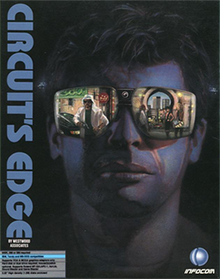George Alec Effinger was an American science fiction author, born in Cleveland, Ohio.

Pool of Radiance is a role-playing video game developed and published by Strategic Simulations, Inc (SSI) in 1988. It was the first adaptation of TSR's Advanced Dungeons & Dragons (AD&D) fantasy role-playing game for home computers, becoming the first episode in a four-part series of D&D computer adventure games. The other games in the "Gold Box" series used the game engine pioneered in Pool of Radiance, as did later D&D titles such as the Neverwinter Nights online game. Pool of Radiance takes place in the Forgotten Realms fantasy setting, with the action centered in and around the port city of Phlan.
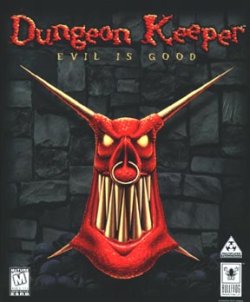
Dungeon Keeper is a strategy video game developed by Bullfrog Productions and released by Electronic Arts in June 1997 for MS-DOS and Windows 95. In Dungeon Keeper, the player builds and manages a dungeon, protecting it from invading 'hero' characters intent on stealing accumulated treasures, killing monsters and ultimately the player's demise. The ultimate goal is to conquer the world by destroying the heroic forces and rival dungeon keepers in each realm. A character known as the Avatar appears as the final hero. Dungeon Keeper uses Creative Technology's SoundFont technology to enhance its atmosphere. Multiplayer with up to four players is supported using a modem, or over a local network.
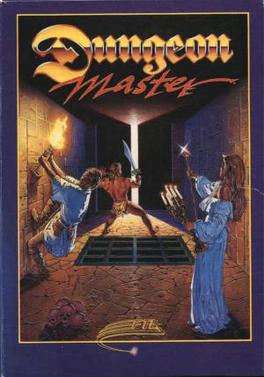
Dungeon Master is a role-playing video game featuring a pseudo-3D first-person perspective. It was developed and published by FTL Games for the Atari ST in 1987, almost identical Amiga and PC (DOS) ports following in 1988 and 1992.

Autoduel is a role-playing video game published by Origin Systems for the Atari 8-bit computers, Commodore 64, Apple II, and IBM PC compatibles in 1985. It was released in 1987 for the Atari ST and in 1988 for the Amiga and Macintosh. The game is based on the Steve Jackson Games series Car Wars.

Roadwar 2000 is a 1986 video game published by Strategic Simulations It is a turn-based strategy game set in a post-apocalyptic future that resembles the world portrayed in the Mad Max films.

Advanced Dungeons & Dragons: Heroes of the Lance is a video game released in 1988 for various home computer systems and consoles. The game is based on the first Dragonlance campaign module for the Dungeons & Dragons fantasy role-playing game, Dragons of Despair, and the first Dragonlance novel Dragons of Autumn Twilight. Heroes of the Lance focuses on the journey of eight heroes through the ruined city of Xak Tsaroth, where they must face the ancient dragon Khisanth and retrieve the relic, the Disks of Mishakal.

Sword of the Samurai is an action and strategy video game developed and published by MicroProse in 1989 for the DOS platform. It features role-playing, strategy, and arcade elements set in feudal Japan. The player begins the game as a little-known vassal samurai; his ultimate goal is to replace Oda Nobunaga as the daimyō responsible for reunifying Sengoku Japan.

Hillsfar is a role-playing video game for MS-DOS compatible operating systems, Amiga, Atari ST, and Commodore 64. It was developed by Westwood Associates and published by Strategic Simulations in 1989. It combines real-time action with randomly generated quests and includes elements of the Advanced Dungeons & Dragons fantasy role-playing game. A port to the Nintendo Entertainment System was released in 1993. Hillsfar received mixed reviews from critics.

Shannara is a 1995 point-and-click adventure game released for MS-DOS and Microsoft Windows. It is based on the book series of the same title by Terry Brooks.

The Magic Candle: Volume 1 is a role-playing video game designed by Ali Atabek and developed and published by Mindcraft in 1989.
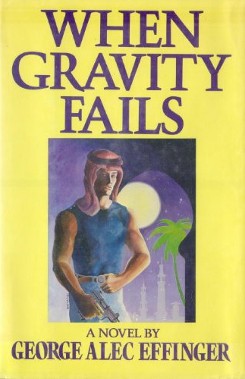
When Gravity Fails is a cyberpunk science fiction novel by American writer George Alec Effinger, published in 1986. It was nominated for the Nebula Award for Best Novel in 1987 and the Hugo Award for Best Novel in 1988. The title is taken from "Just Like Tom Thumb's Blues", a song by Bob Dylan: "When your gravity fails and negativity don't pull you through".
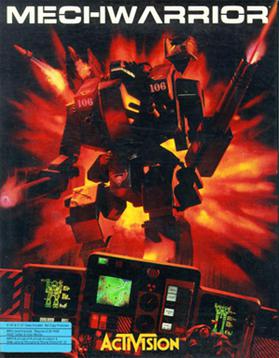
MechWarrior is the second video game released in the BattleTech game series. MechWarrior was the first video game to offer the player a chance to pilot a BattleMech from the view of a pilot. With this game the player has a great deal of freedom when compared to many of the follow-up MechWarrior games, which include choosing missions, buying & selling mechs and parts, hiring lance-mates, and traveling throughout the Inner Sphere. Underneath the major game mechanics, the player had the option of following a role playing style story arc that would unfold over five in-game years.
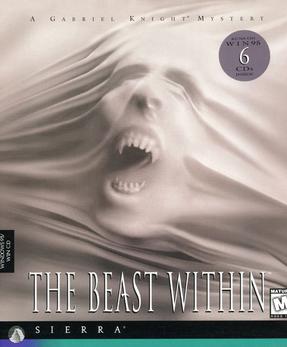
The Beast Within: A Gabriel Knight Mystery is a point-and-click adventure game, created by Jane Jensen, developed and published by Sierra On-Line, and released for MS-DOS, Macintosh, and Microsoft Windows, in 1995. The sequel to 1993's Gabriel Knight: Sins of the Fathers, the game's story focuses on a new investigation for Gabriel Knight, adjusting to his new life as a "shadow hunter", as he investigates a spate of killing around Munich believed to be the work of a werewolf, with assistance in his work from Grace Nakimura, who looks into a link between the killings and the final years of a Bavarian king in the 19th century.

Mines of Titan is a single-player role-playing video game, developed by Westwood Associates, and published by Infocom in 1989 for Apple II, Commodore 64, and MS-DOS.

Wonderland, published in 1990 by Virgin Games, is an interactive fiction game developed by Magnetic Scrolls based on Lewis Carroll's Alice in Wonderland. While playing as Alice, the player goes on a journey solving puzzles in order to find the way back home from Wonderland. With hundreds of locations to explore, the game introduced characters from the original book to guide the journey through Wonderland. First introducing the magnetic windows system, Wonderland received positive reviews upon release.
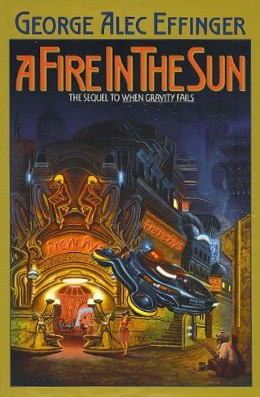
A Fire in the Sun is a cyberpunk science fiction novel by American writer George Alec Effinger, published in 1989. It is the second novel in the three-book Marîd Audran series, following the events of When Gravity Fails, and concentrating on Marîd's experience as he becomes the main lieutenant of Friedlander Bey's business empire while realizing that his new master has darker aspects than he suspected.

Star Command is a video game released by Strategic Simulations in 1988.

Breach 2 is a science fiction strategy video game developed by Omnitrend Software in 1990 for the Amiga, Atari ST and MS-DOS. It is the sequel to the 1987 game Breach, and was itself followed by Breach 3 in 1995. The game is set in the universe of Omnitrend's Universe and Rules of Engagement, and is compatible with both Rules of Engagement games.

Bad Blood is a top-view, post-apocalyptic action role-playing game from 1990.
